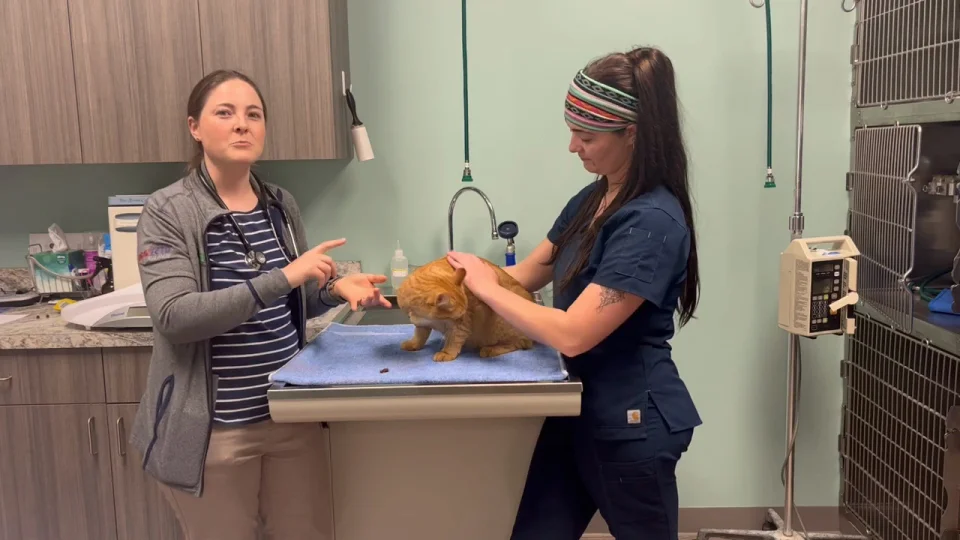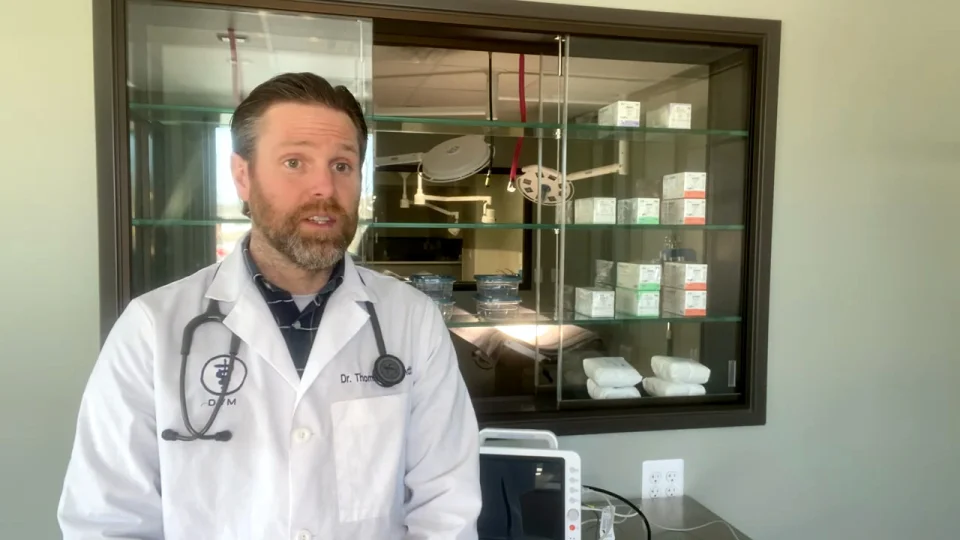After spaying, female cat behavior may include temporary changes such as decreased activity and appetite. Female cats may also exhibit some signs of discomfort and sensitivity in the surgical area.
This comprehensive guide discusses the various behaviors and changes that female cats may display after the spaying procedure, providing insights and tips for cat owners to help their pets through this post-surgery period. Understanding and attending to these behaviors can help ensure a smooth recovery process for your female cat and promote her overall well-being.
So, let’s delve into the world of female cat behavior after spaying and learn how to support and care for your furry friend during this time.
The Importance Of Spaying Female Cats
Welcome to our comprehensive guide on female cat behavior after spaying! In this article, we will explore the importance of spaying female cats and how it can benefit both your furry friend and the overall cat population. Spaying, also known as ovariohysterectomy, is a surgical procedure that removes the ovaries and uterus of a female cat, rendering her unable to reproduce. Let’s delve into the reasons why spaying your female cat is crucial.
Reducing The Risk Of Certain Diseases
Spaying your female cat can greatly reduce the risk of certain diseases, promoting a healthier and longer life for your feline companion. One notable disease that can be prevented is pyometra, a life-threatening infection of the uterus. By eliminating the uterus through spaying, you are effectively eliminating the possibility of your cat developing pyometra, which can be fatal if left untreated.
Breast cancer is another health concern that can be reduced through spaying. When a female cat undergoes spaying before her first heat cycle, her chances of developing breast cancer later in life are significantly lower. In fact, spaying before the first heat cycle can reduce the risk of breast cancer by almost 90%. The removal of the ovaries decreases the production of hormones that contribute to the formation of cancerous cells.
Preventing Unwanted Pregnancies
Spaying your female cat is an effective way to prevent unwanted pregnancies, which in turn helps reduce the number of homeless cats in shelters or on the streets. Female cats, also known as queens, can experience multiple heat cycles throughout the year, during which they become fertile and receptive to mating. By spaying your cat, you eliminate the chances of her becoming pregnant and contributing to the growing feline population.
This procedure not only prevents unwanted kittens but also provides several benefits for the individual cat. Female cats in heat may display behavioral changes, such as increased vocalization, restlessness, and aggressive behavior. Spaying eliminates these changes while also reducing the risk of your cat attempting to escape outdoors in search of a mate, potentially exposing her to danger, accidents, or encounters with other animals.

Credit: www.hebronanimalhospital.com
Understanding The Spaying Process
Understanding the spaying process is essential for cat owners to comprehend their female cat’s behavior afterward. This comprehensive guide provides valuable insights into what to expect and how to care for your cat post-surgery.
Understanding the Spaying Process Female cat behavior can be a mysterious thing, and after spaying, it’s common for pet owners to observe some changes in their feline friend. To make this transition as smooth as possible and ensure your cat’s well-being, it’s important to understand the spaying process. This comprehensive guide will provide you with all the information you need to navigate through this stage of your cat’s life.What Is Spaying?
Spaying, also known as an ovariohysterectomy, is a surgical procedure performed on female cats to remove their reproductive organs. This procedure prevents the cat from going into heat and eliminates the risk of unwanted pregnancies. Spaying is typically done when a cat is around six months old, but it can also be performed on older cats. It is a routine procedure and is considered safe and effective.How Is Spaying Performed?
During the spaying procedure, the cat is given general anesthesia to ensure that she feels no pain. A small incision is made in the abdomen, through which the veterinarian removes the ovaries and the uterus. The incision is then closed with sutures or surgical staples. The entire surgery usually takes about 30 minutes to one hour, depending on the cat’s size and health condition.Recovery Process After Spaying
After the surgery, it’s important to provide a comfortable and quiet space for your cat to recover. Here are some key aspects of the recovery process:- Monitoring: Keep a close eye on your cat after the surgery. Check the incision site for any signs of infection, such as redness, swelling, or discharge. Monitor her behavior for any unusual signs of discomfort or distress.
- Pain management: Your veterinarian may prescribe pain medication to help alleviate any post-operative pain. Follow the dosage instructions carefully and ensure your cat receives the prescribed medication as directed.
- Restricted activity: During the recovery period, it’s crucial to limit your cat’s physical activity. Avoid letting her jump or climb to prevent strain on the incision site. Provide a cozy, quiet area where she can rest undisturbed.
- Diet and hydration: Encourage your cat to drink plenty of water to stay hydrated. Offer small, frequent meals of easily digestible food to support her healing process.
- Preventing licking: Your cat may be tempted to lick the incision site, which can lead to infection or irritation. To prevent this, you can use an Elizabethan collar or a surgical recovery suit to restrict her access to the incision area.
Behavioral Changes After Spaying
Female cat behavior can undergo significant changes after being spayed. This comprehensive guide explores the behavioral shifts that cats may experience post-spaying, shedding light on their altered habits and responses.
Decreased Aggression
After your female cat has been spayed, you may notice a significant decrease in aggression. This is because the surgery removes the source of the hormone that drives aggressive behavior in cats – their ovaries. Without these hormones, female cats become calmer and less likely to engage in aggressive behaviors such as biting, scratching, or hissing.Decreased Roaming And Yowling
Another behavioral change you may observe in your female cat after spaying is a decrease in roaming and yowling. Female cats are known to exhibit these behaviors when they are in heat, as they try to attract male cats for mating. However, after spaying, their reproductive organs are removed, eliminating the urge to roam and yowl for attention. This can be a significant relief for both you and your cat, as it reduces the chances of her getting lost or injured during her adventures outside.Changes In Appetite And Weight
Spaying can also result in changes in your female cat’s appetite and weight. Some cats may experience a decrease in appetite shortly after the surgery due to the effects of the anesthesia and pain medication. However, this is usually temporary, and they will gradually regain their normal appetite within a few days. On the other hand, some cats may experience an increase in appetite and weight gain after spaying. This can be managed by monitoring their food intake and making sure they receive a balanced diet to avoid excessive weight gain. Overall, it’s important to understand that every cat is unique, and the behavioral changes after spaying can vary from one cat to another. While most female cats experience a decrease in aggression and the urge to roam and yowl, the changes in appetite and weight can differ. If you have any concerns about your cat’s behavior after spaying, it’s always best to consult with your veterinarian for guidance and support.
Credit: www.amazon.com
Managing Post-surgery Care
After your female cat has recently been spayed, it’s crucial to provide her with proper post-surgery care to ensure a smooth and comfortable recovery. This involves creating a comfortable recovery space, monitoring the incision site, and administering pain medication as prescribed. These steps are essential for helping your feline friend heal and get back to her playful self.
Providing A Comfortable Recovery Space
Creating a cozy and calm recovery space for your cat is vital for her well-being during the post-surgery period. Designate a separate, quiet area in your home where she can rest without disturbances. Keep in mind that cats prefer a stable and familiar environment, so choose a spot where she feels safe and secure.
Add soft bedding, such as blankets or towels, to create a comfortable surface for your cat to lay on. Ensure the temperature in the recovery space is moderate, neither too hot nor too cold, to help her regulate her body temperature effectively.
Monitoring The Incision Site
Regularly monitoring the incision site is crucial to detect any signs of infection or complications. Keep a close eye on the wound area to ensure it is healing properly. Look out for any redness, swelling, oozing, or discharge. If you notice any concerning changes or abnormalities, contact your veterinarian promptly.
While monitoring, make sure your cat avoids excessive licking or scratching the incision site. Licking can delay healing and increase the risk of infection. To prevent this, you can use an Elizabethan collar (commonly known as the “cone of shame”) or soft cloth collar to restrict her access to the area.
Administering Pain Medication As Prescribed
Pain medication plays a crucial role in managing your cat’s comfort levels post-surgery. Your veterinarian will prescribe suitable pain medications to keep her pain-free during the recovery period. It’s essential to administer the medication as directed to ensure its effectiveness.
Follow your veterinarian’s instructions carefully and pay attention to the dosage and frequency. It’s crucial not to skip or alter the dosing schedule as it may hinder your cat’s pain relief. If you have any concerns or questions about the medication, don’t hesitate to consult your veterinarian for clarification.
Remember, managing your cat’s post-surgery care is vital for a smooth recovery. Providing a comfortable recovery space, monitoring the incision site, and administering pain medication as prescribed will help ensure a speedy and hassle-free healing process for your beloved furry friend.
Consulting A Veterinarian
Consulting a veterinarian is crucial for understanding female cat behavior after spaying. This comprehensive guide provides insights into post-surgery behavior changes, helping cat owners navigate this important aspect of their pet’s health and well-being.
Consulting a Veterinarian Addressing any concerns or unusual behavior: After spaying your female cat, it’s important to monitor her behavior closely. While most cats recover smoothly, some may experience minor complications or exhibit unusual behavior. If you notice any concerns or unusual behavior, it’s crucial to consult your veterinarian. Scheduling follow-up appointments: To ensure your female cat’s health and well-being post-spaying, it’s essential to schedule follow-up appointments with your veterinarian. These appointments allow the vet to assess your cat’s recovery progress and address any potential issues that may arise. During these follow-up visits, your veterinarian may conduct a physical examination to ensure proper healing and assess your cat’s overall health. They may also discuss any behavioral changes you’ve noticed and provide guidance on managing them. Ensuring each H3 heading adheres to HTML syntax: Addressing any concerns or unusual behavior:Addressing Any Concerns Or Unusual Behavior
Scheduling follow-up appointments:Scheduling Follow-up Appointments

Credit: be.chewy.com
Frequently Asked Questions On A Comprehensive Guide: Female Cat Behavior After Spaying
How Does The Behaviour Of A Female Cat Change After Spaying?
The behavior of a female cat typically changes after spaying. She tends to be more calm and less aggressive. She may also display reduced territorial marking and a decreased urge to roam or mate.
What Should A Female Cat Look Like After Being Spayed?
A spayed female cat should have a small incision on her abdomen that is usually closed with dissolvable stitches. The area may be shaved and have a small scar, but her fur will grow back. She will not go into heat or be able to reproduce after being spayed.
Are Female Cats Calmer After Being Spayed?
Spaying female cats can help reduce their hormonal behavior, making them generally calmer. It eliminates the heat cycle, minimizing the yowling and restlessness associated with it. However, individual cat personalities can vary, so some may still exhibit playful or energetic traits.
How Long Does It Take A Female Cat To Recover From Being Fixed?
A female cat usually takes about 7-10 days to recover from being fixed.
Conclusion
After spaying a female cat, it’s important to observe and understand their behavior. Remember, every cat is unique, so their responses may vary. By keeping an eye out for changes in appetite, energy levels, and litter box habits, you can ensure your cat’s well-being.
Be patient and show plenty of love and attention during this recovery period. By following this comprehensive guide, you can navigate your cat’s post-spaying behavior with confidence.

